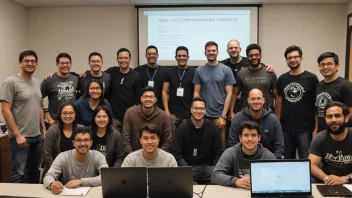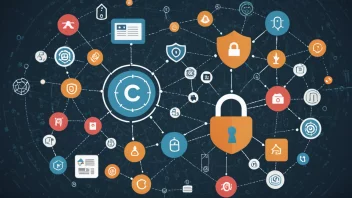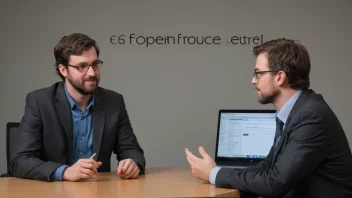In the realm of open source projects, the structure and culture of the community can have a significant impact on the success and sustainability of the project. Two prevalent models are inclusive and exclusive community approaches. While both aim to foster collaboration and innovation, they differ fundamentally in their accessibility and engagement strategies. This article will delve into the pros and cons of each model, exploring how they shape the development and longevity of open source projects.
Understanding Open Source Community Models
Open source communities are built around the philosophy of sharing code and resources freely. However, the way these communities operate can vary significantly. An inclusive open source community actively seeks to engage a diverse range of contributors, while an exclusive community may have more rigid structures that limit participation.
Inclusive Open Source Communities
Inclusive communities prioritize accessibility and diversity. They encourage participation from individuals of various backgrounds, skill levels, and perspectives. This model is characterized by the following:
- Diversity and Representation: Inclusive communities often reflect a broader range of contributors, which can lead to more innovative and well-rounded project outcomes.
- Supportive Environment: These communities typically provide mentorship and resources to help newcomers navigate the complexities of open source contributions.
- Open Governance: Decision-making processes in inclusive communities are often transparent and democratized, allowing for input from all members.
Pros of Inclusive Communities
- Broader Skill Set: A diverse group of contributors brings varied skills and ideas, enhancing the project's functionality and creativity.
- Higher Engagement: Individuals are more likely to contribute when they feel their voices are heard and valued.
- Long-Term Sustainability: A welcoming environment fosters loyalty and long-term involvement, which can sustain the project over time.
Cons of Inclusive Communities
- Potential for Conflict: With diversity comes differing opinions, which can lead to conflicts if not managed properly.
- Resource Intensive: Creating an inclusive environment requires dedicated resources for training, mentorship, and conflict resolution.
Exclusive Open Source Communities
Exclusive communities, on the other hand, may impose stricter guidelines for participation. This can result in a more homogeneous group of contributors. Key characteristics include:
- Selective Membership: Participation may be limited to individuals with certain qualifications or experiences, which can stifle diversity.
- Clear Hierarchies: Decision-making processes may be concentrated in the hands of a few, limiting input from the wider community.
- Less Support for Newcomers: New contributors may find it challenging to integrate into these communities without prior experience or connections.
Pros of Exclusive Communities
- Efficiency in Decision-Making: Clear hierarchies can expedite decision-making processes, potentially speeding up project development.
- Expertise-Driven: A homogeneous group may focus intensely on specialized knowledge, leading to high-quality outputs in specific areas.
Cons of Exclusive Communities
- Lack of Innovation: A narrow range of perspectives can hinder creativity and limit the project's adaptability to changing needs.
- High Barrier to Entry: New contributors may feel unwelcome or undervalued, leading to decreased engagement and higher turnover.
Comparison of Community Impact
The impact of an open source community model extends beyond the project itself. It affects the wider ecosystem, including how knowledge is shared and how inclusive technology becomes. Here are some key comparison points:
Innovation and Creativity
Inclusive communities often foster a more innovative environment due to the diverse perspectives and ideas shared among members. In contrast, exclusive communities may excel in specific niches but can struggle to adapt to broader trends.
Contribution Rates
Statistics often show that inclusive communities tend to have higher contribution rates, as individuals feel more empowered to share their ideas and skills. Exclusive communities, while potentially maintaining a core group of highly skilled contributors, may face stagnation as new talent is deterred.
Long-Term Viability
In terms of sustainability, inclusive models often create a loyal contributor base that remains engaged over time. Exclusive models risk losing contributors who feel alienated or undervalued, leading to potential project decline.
Case Studies
To illustrate the differences between these community models, we can look at a few notable open source projects.
Inclusive Community Example: Mozilla
Mozilla has long been recognized for its inclusive approach. The organization focuses on creating a welcoming environment for contributors from all backgrounds. Their community initiatives include mentorship programs and regular outreach to underrepresented groups. This inclusivity has resulted in a diverse team that drives innovation in web technologies.
Exclusive Community Example: Linux Kernel
The Linux kernel community, while undeniably successful, has faced criticism for its exclusivity. Contributions are often concentrated among established developers, creating barriers for newcomers. While the quality of code remains high, the lack of diversity has raised questions about the long-term adaptability of the project.
Conclusion
In comparing inclusive and exclusive open source community models, it is clear that both have their strengths and weaknesses. Inclusive communities promote diversity, engagement, and long-term sustainability, while exclusive communities may offer efficiency and specialized expertise. Ultimately, the choice between these models may depend on the specific goals of the project and its leadership. However, fostering inclusivity is likely to yield greater long-term benefits, not just for the project itself, but for the open source ecosystem as a whole.






